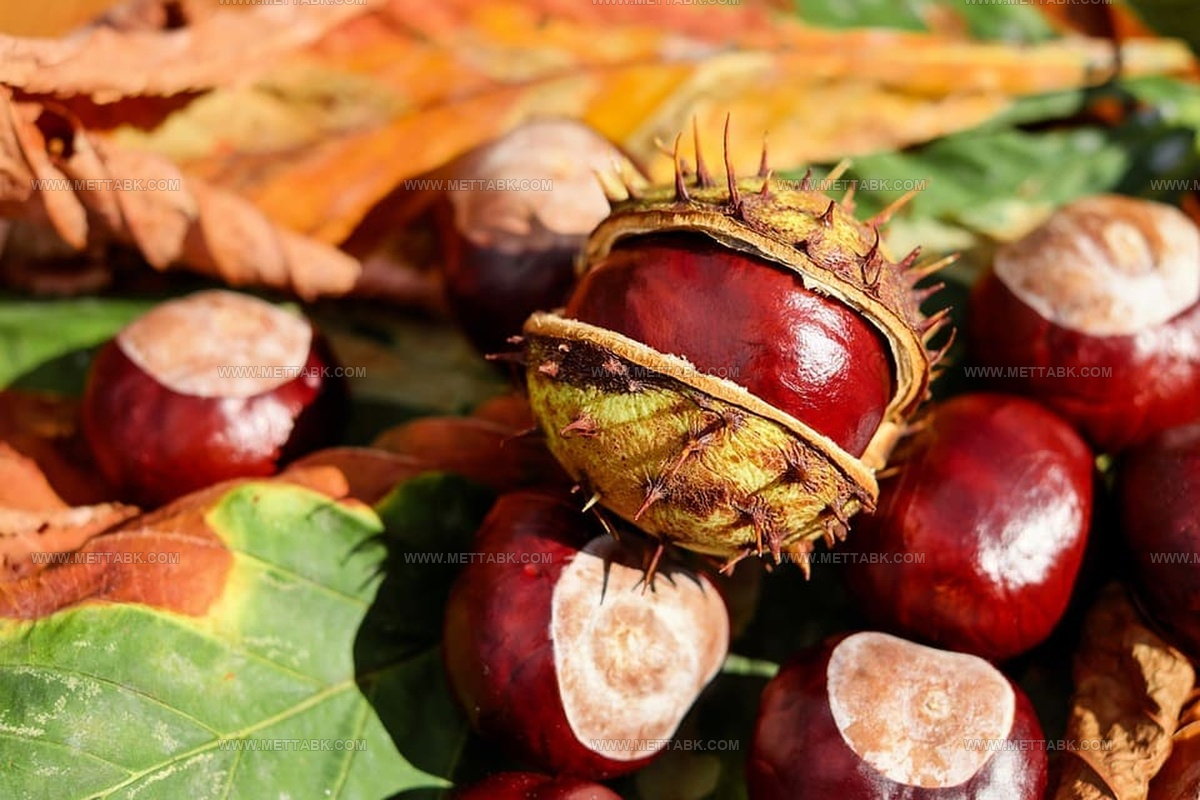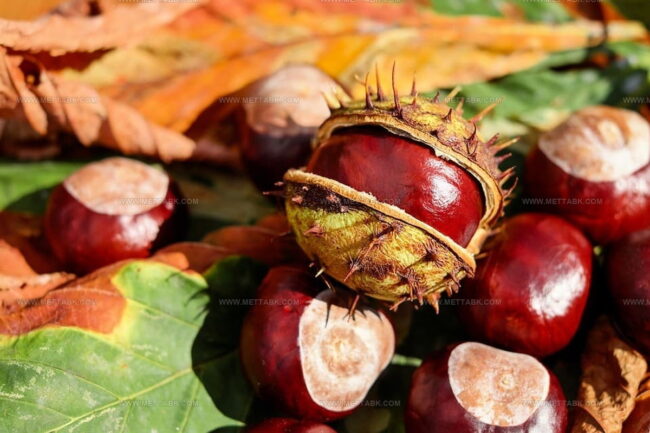What Do Chestnuts Taste Like? Find Out Their Real Flavor
Chestnuts have fascinated food lovers for centuries with their unique culinary potential.
Distinctive nuts grow in spiky green shells that protect their delicate interior during development.
When autumn arrives, chestnut trees scatter their treasured harvest across forest floors and orchards.
Curious eaters often wonder about the sensory experience of biting into these seasonal delicacies.
Many cultures have traditional recipes that showcase chestnuts' remarkable qualities, transforming them into both sweet and savory dishes.
Professional chefs and home cooks alike appreciate the versatility of these remarkable nuts.
Your curiosity about their flavor profile is about to be satisfied through an engaging culinary journey.
Chestnuts: What They Are
Chestnuts grow on Castanea trees across Europe, North America, and Asia.
These special nuts count among the few nuts that actually classify as fruits instead of seeds.
(Peanuts stand out as a legume.)
North American, Chinese, and Japanese chestnuts work well for eating, while European chestnut, called Castanea sativa or Spanish chestnut, shows up most often during holiday meals from Thanksgiving through New Year.
Spiny husks hold chestnuts in tight clusters of seven nuts.
Smooth and shiny, each nut looks dark brown with a flat and rounded side because of how they press together inside their protective covering.
Chefs use chestnuts in many dishes, both savory and sweet.
Raw chestnuts taste bitter with a slight buttery hint.
Cooked chestnuts share flavor notes similar to sweet potatoes.
Bakers mix them into breads, soups, and stuffing.
Roasting requires peeling shells to access inner meat.
Boiling before roasting helps reduce tannic acid levels, making them more enjoyable to eat.
Flavor Of Chestnuts
Raw chestnuts have a crisp and sharp taste at first.
Once heated, they soften into a rich, smooth treat that feels like eating a sweet potato.
Cooking changes their whole character from hard and bitter to creamy and mild.
The harsh edge melts away, leaving behind a warm, comforting flavor that slides across your tongue.
Heat helps break down the tough parts of the chestnut, making them smooth and pleasant to eat.
When roasted or baked, chestnuts develop a gentle sweetness that surprises anyone who has tried them raw.
Their texture shifts from crunchy to silky, creating a delightful eating experience.
Chefs love using chestnuts in different recipes because they work well in both salty and sweet dishes.
Heating releases hidden flavors, turning these little nuts from something harsh into a delectable ingredient.
Roasting brings out a deep, rich taste that makes chestnuts a special treat in many kitchens around the world.
Their ability to change so dramatically with cooking makes them a fascinating ingredient for anyone who enjoys experimenting with food.
Flavor Differences: Roasted vs. Boiled Chestnuts
Chestnuts are a tasty seasonal treat, and the way you cook them: roasted or boiled, makes a big difference in their flavor and texture:
Can You Eat Chestnuts Raw?
Raw chestnuts prove safe for eating when they come from the correct type and not from look-alike plants that grow in matching environments.
Horse chestnuts differ from good chestnuts through their outer shell, which contains thin, hairy growths that set them apart from smooth chestnut coverings.
Chestnut identification becomes tricky when shells vanish.
Uncertain chestnut sources mean wise choices involve throwing them away, since even small bits of harmful chemicals in wrong chestnuts could spark serious stomach troubles.
Are Worms Present In All Chestnuts?
Chestnuts might hide some unwelcome guests, but smart handling can help save them for later.
Gathering chestnuts quickly after they drop makes a big difference in keeping them healthy.
Weevil larvae typically choose brown chestnut shells as their egg-laying spots during late summer or early winter.
Stopping worm growth requires a simple water treatment method.
Warm water near 120 F (48.88 C) in an oven for 20 minutes can help eliminate potential pests.
Good cleaning steps work wonders in protecting these nuts.
Quickly collecting fallen nuts and leaves from the ground stops worm problems before they start.
Waiting more than two or three days after nuts drop means water treatment won't work effectively.
Do Chestnuts Taste Like Hazelnuts?
Chestnuts carry a unique nutty flavor that sets them apart from hazelnuts.
Their taste leans more toward sweetness, especially when roasted, which brings out notes similar to sweet potatoes or yams.
Roasting or baking chestnuts helps release a gentle, pleasant aroma that lingers softly after each bite.
Grinding and mashing chestnuts during the maceration process helps draw out special lipid compounds, creating rich flavors perfect for spreads and other chestnut-based recipes.
What Spoiled Chestnuts Taste Like
Like other organic foods, chestnuts can go bad quickly because of outside conditions or tiny organisms growing inside them.
Removing chestnuts from their protective outer layers leaves them open to air and microbes, which makes them spoil faster.
Signs of spoilage are clear even before you taste the nuts.
Bad chestnuts have noticeable changes that show they are no longer good to eat.
Chestnuts develop a hard inner flesh and create a dry, flaky outer surface when they start to rot.
These changes mean the nut is no longer safe for eating.
Sometimes chestnut spoilage isn't obvious at first glance.
When chestnuts go bad, they will taste sour and unpleasant because of their high fat levels.
Checking carefully helps you avoid eating something that could make you sick.
How To Cook Chestnuts
Chestnut lovers have multiple options for enjoying this tasty treat.
Soaking or roasting ranks as the most popular method of preparation.
Raw chestnuts offer a crunchy and bitter experience for those seeking something different.
Cooling roasted chestnuts helps preserve their rich flavor profile.
Soup and raw consumption also work well for chestnut enthusiasts.
Roasting removes bitter notes and creates a delightful snack.
Winter typically sees higher chestnut consumption, though they remain available year-round.
Some individuals enjoy raw chestnuts, while others prefer cooking methods like oven or pan roasting.
Roasted chestnuts complement mashed potatoes and chicken dishes beautifully.
Preventing staleness requires careful cooking techniques.
Removing protective shells helps maintain their crisp texture and prevents spoilage.
This approach ensures chestnuts stay fresh and delicious for longer periods.
Global Cuisines Featuring Chestnuts
Chestnuts are a favorite in many global cuisines, adding a sweet, nutty flavor and soft texture to both savory and sweet dishes around the world:
Keeping Chestnuts Fresh Longer
Chestnuts show up briefly during Fall months.
Shoppers can store these nuts in freezer bags for 6 months, whether they are raw, roasted, or without shells.
Warming chestnuts happens quickly when you want to enjoy them.
Refrigerator storage works well for chestnuts, keeping them fresh for one month at 36 degrees Fahrenheit.
Placing chestnuts on the top shelf helps maintain their quality.
Storing chestnuts through water soaking remains an old traditional method lasting up to three months.
Water soaking takes 9 days with specific steps.
Floating nuts go in the trash during initial two days, with small water changes happening daily.
Complete water replacement occurs on fifth and eighth days.
This process lets chestnuts ferment and stay preserved.
Wrapping chestnuts in cloth helps dry them before placing in sealed jars for storage.




Nate Harper
Founder & Recipe Curator
Expertise
Single-Recipe Development, Farm-to-Table Cooking, Seasonal Menu Planning, Culinary Storytelling, Home Kitchen Innovation
Education
Cascade Culinary Institute – Central Oregon Community College
Certificate in Culinary Arts
Focus: Farm-to-table cuisine, sustainable cooking practices, and seasonal recipe creation.
Nate studied under experienced chefs who emphasized local sourcing, minimal waste, and building recipes from fresh, simple ingredients.
Nate Harper is the founder and creative force behind Make, Take, Bake. Raised in the wild beauty of Oregon’s high desert, Nate grew up surrounded by family gardens, farmers’ markets, and home kitchens that celebrated the seasons.
His early love for simple, honest food evolved into a professional passion when he attended Cascade Culinary Institute, where he sharpened his skills in creating recipes that are sustainable, satisfying, and made for everyday life.
Nate’s goal is to make cooking feel accessible, free of fuss, and full of flavor. He believes a single, thoughtfully built dish can stand alone, and sometimes even steal the show.